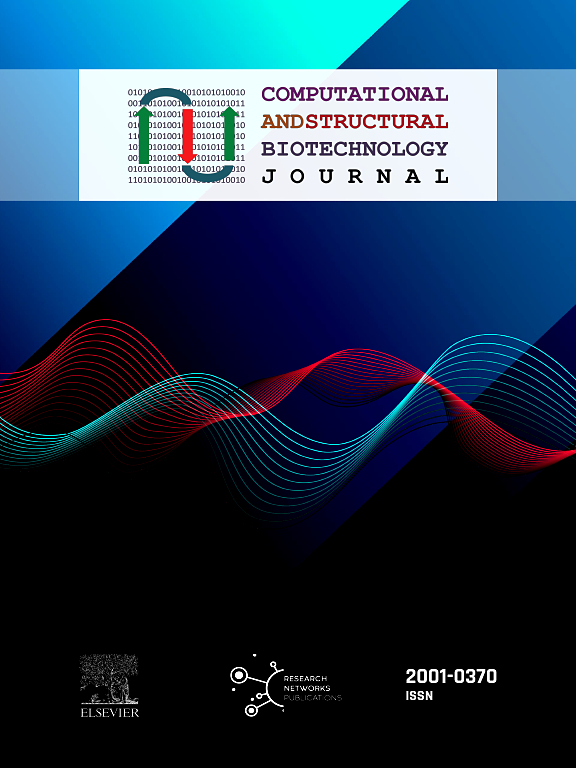Characterizing the pan-cancer role of exosomal miRNAs in metastasis across cancers
IF 4.4
2区 生物学
Q2 BIOCHEMISTRY & MOLECULAR BIOLOGY
Computational and structural biotechnology journal
Pub Date : 2025-01-01
DOI:10.1016/j.csbj.2024.12.025
引用次数: 0
Abstract
Exosomal microRNAs (exomiRs) play a critical role in intercellular communication, especially in cancer, where they regulate key cellular processes like proliferation, angiogenesis, and metastasis, highlighting their significance as potential diagnostic and therapeutic targets. Here, we aimed to characterize the role of exomiRs, derived from seven cancer types (four cell lines and three tumors), in influencing the pre-metastatic niche (PMN). In each cancer type we extracted high confidence exomiRs (LogFC >= 2 in exosomes relative to control), their experimentally validated targets, and the enriched pathways among those targets. We then selected the top100 high-confidence targets based on their frequency of appearance in the enriched pathways. We observed significantly higher GC content in exomiRs relative to genomic background. Gene Ontology analysis revealed both general cancer processes, such as wound healing and epithelial cell proliferation, as well as cancer-specific processes, such as “angiogenesis” in the kidney and “ossification” in the lung. ExomiR targets were enriched for cancer-specific tumor suppressor genes and downregulated in PMN formed in lungs compared to normal. Motif analysis showed high inter-cancer similarity among motifs enriched in exomiRs. Our analysis recapitulated exomiRs associated with M2 macrophage differentiation and chemoresistance, such as miR-21 and miR-222–3p, regulating signaling pathways like PTEN/PI3/Akt, NF-kB, etc. Additionally, Cox regression analysis in TCGA indicated that exomiR targets are significantly associated with better overall survival of patients. Lastly, support vector machine model using exomiR targets gene expression classified responders and non-responders to therapy with an AUROC ranging from 0.72 to 0.96, higher than previously reported gene signatures.
求助全文
约1分钟内获得全文
求助全文
来源期刊

Computational and structural biotechnology journal
Biochemistry, Genetics and Molecular Biology-Biophysics
CiteScore
9.30
自引率
3.30%
发文量
540
审稿时长
6 weeks
期刊介绍:
Computational and Structural Biotechnology Journal (CSBJ) is an online gold open access journal publishing research articles and reviews after full peer review. All articles are published, without barriers to access, immediately upon acceptance. The journal places a strong emphasis on functional and mechanistic understanding of how molecular components in a biological process work together through the application of computational methods. Structural data may provide such insights, but they are not a pre-requisite for publication in the journal. Specific areas of interest include, but are not limited to:
Structure and function of proteins, nucleic acids and other macromolecules
Structure and function of multi-component complexes
Protein folding, processing and degradation
Enzymology
Computational and structural studies of plant systems
Microbial Informatics
Genomics
Proteomics
Metabolomics
Algorithms and Hypothesis in Bioinformatics
Mathematical and Theoretical Biology
Computational Chemistry and Drug Discovery
Microscopy and Molecular Imaging
Nanotechnology
Systems and Synthetic Biology
 求助内容:
求助内容: 应助结果提醒方式:
应助结果提醒方式:


